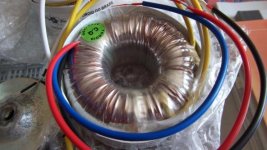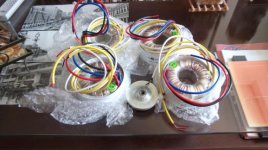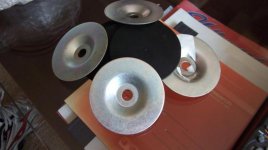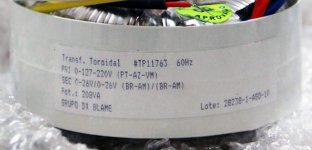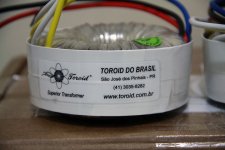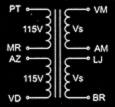Thank you guys...i am cleaning the digestive system
Controlling blood pressure.... having vitamins and eletrolites to the body, eating small portions and only fruits....in preparation.
Thank you Pocoyo, Gaetan, Nikcho, A Wayne, Evette, Coolet, and a lot of others..i am tuning them here and i know there are others.
Energy beeing sent or received are not a superpower nor magic..everybody can do that...just positive thinking and concentration.... there are books, scientists and hystorical examples.... some guys call this pray...do not matter the word to explain..it is all energy. (E=MC Einstein)
regards,
Carlos
Controlling blood pressure.... having vitamins and eletrolites to the body, eating small portions and only fruits....in preparation.
Thank you Pocoyo, Gaetan, Nikcho, A Wayne, Evette, Coolet, and a lot of others..i am tuning them here and i know there are others.
Energy beeing sent or received are not a superpower nor magic..everybody can do that...just positive thinking and concentration.... there are books, scientists and hystorical examples.... some guys call this pray...do not matter the word to explain..it is all energy. (E=MC Einstein)
regards,
Carlos
Did the last tests today and found that at 750mV RMS input sinewave I was getting 19.3v AC output. This equates to a gain of 25.7 which is similar to what metal and you suggested so I would say everything is hunky dory.
I like to thank you Carlos and others on this forum (Gregs website, rudi, metal) and others I have not spoken to but provided me with useful information to learn and to build. As a first amplifier build I found it very enjoyable and would reccomend the DX to anyone. You won't be disappointed.
Have a good operation Carlos.
Regards
Simon
Apparently, the Blame has losses in the bass, some perceive this way, others not!
Some folks perceive the bass as weak and shy..others not....i do like the bass too...i just could not make it stronger in the Blame..i have tried a lot... this depends on speakers too..the marriage, the coupling, the adjustment between them, the speaker efficiency is one of the main
problems we have... speaker sensitivity means how many watts it needs to move full compliance..and also acoustically to play loud.
Modern speaker are made to face high Power...more than our 25 or 30 watts average (8 ohm is 50 watts max, unclipped).
Speakers already had 2 centimeters compliance and needed 4 to 5 volts to achieve that in the early past.... and since the eigthties the demand of Power increased... remember we had 2 channels in automobiles, and then they changed to 5 channels..this was the way the had to increase, as amplifiers was already in bridge mode and they had the battery voltage as limiting factor.... soon, industries produced the SMPS and then the Power jumped from 25 to more than hundred watts each channel... the speaker needed to face a higher Power.
What they did?.. IF 4 volts means 2 centimeters compliance... 1 centimeter movement to outside and one centimeter movement to inside (reference is speaker resting position)...they made them twice of that...and so.... things were fixed this way... also they increase the magnet power, and voice coil dissipation.
But the Power demand continued to increase..power jumped to 300 watts rms each channel... 1200 watts RMS was not hard to find with switching mode Power supplies...here, down in Brazil we have hundreds of excelent factories producing this stuff...the need of speaker able to face more Power was a challenge.
What they did in Brazil.... they decide to fool everybody.... a disgusting solution i think..they increased the diafragm hardness making it hard to move..this way can face more Power without going to the maximum compliance.... facing more Power without acoustic distortion... they increase the Center inner spider hardness to face that problem..they have opened holes in the centering spider for cooling purposes..also in the back of the magnet there was a hole to ventilation...the coil, inner structure was changed from papper or plastic to aluminium , also duraluminium was used, hard aluminium, aircraft aluminium..the voice coil was not made anymore with circular cross section wires...was aluminium plus copper combined in squared section wires to provide more magnetic field, more hudgeness , more cooling and able to face more current.
Increased the magnetic field using stronger,bigger or better magnetic materials (neodimium) and others...this way they made speaker drivers able to face 34 volts and more than 8.5 amperes (4 ohms)...what happened?
The speaker lost efficiency... to move full compliance..needed more than 50 watts rms....and distorted with full power..as could not increase compliance further than it’s own mechanicall limits...the speaker diafragm was going to the maximum while the áudio entering was already increasing in level..so.... part of the waveform, the peak, was flatten (acoustically) because the speaker could not of futher forward or backward.
When we install our Blame in such kind of speaker.... the bass disappears, as we have no Power enougth to overcome all that hardness..all that resistance to move...this makes our bass weak, in the reality, what happens is that when treble is very present the way we have, as a ratio, as a proportion, the bass disappears....and the opposite can be true, depending the case.
It is something connected to our perception too..if i filter the treble, the amplifier will sound bassy...if i filter the bass, the sound Will look thin with a lot of treble...it is a hell hard to adjust because electrically the amplifier is flat..what enters is what goes out..not more high frequencies than low frequencies and no more low frequencies than high frequencies..... the phenomen, the magic mistery thing is that some amplifiers "looks" to play more treble than bass and others seesm to play more bass than treble...a rarity when ballanced.
When we perceive the wrong thing, and go bothering ourselves (perfectionism) and we increase (perception) that difference in our perception...it looks louder and louder that difference... we go feeling and perceiving more and more and more and more.
I understand that everything sounds this way...some amplifiers have easier transference of bass to speakers, others have easier transference of treble..and this makes them play one or other sub áudio band looking louder..this does not mean electrically something is louder..this seems bass is not well transfered to the speaker..the "conversation, marriage, harmony, matching, is not perfect for bass"... this way the bass receive a sabotage in performance when treble goes fine...you see..then we notice the amplifier with more trebles......more treble does not means, necessarily, the presence of louder trebles..but the lack of bass.
regards,
Carlos
Some folks perceive the bass as weak and shy..others not....i do like the bass too...i just could not make it stronger in the Blame..i have tried a lot... this depends on speakers too..the marriage, the coupling, the adjustment between them, the speaker efficiency is one of the main
problems we have... speaker sensitivity means how many watts it needs to move full compliance..and also acoustically to play loud.
Modern speaker are made to face high Power...more than our 25 or 30 watts average (8 ohm is 50 watts max, unclipped).
Speakers already had 2 centimeters compliance and needed 4 to 5 volts to achieve that in the early past.... and since the eigthties the demand of Power increased... remember we had 2 channels in automobiles, and then they changed to 5 channels..this was the way the had to increase, as amplifiers was already in bridge mode and they had the battery voltage as limiting factor.... soon, industries produced the SMPS and then the Power jumped from 25 to more than hundred watts each channel... the speaker needed to face a higher Power.
What they did?.. IF 4 volts means 2 centimeters compliance... 1 centimeter movement to outside and one centimeter movement to inside (reference is speaker resting position)...they made them twice of that...and so.... things were fixed this way... also they increase the magnet power, and voice coil dissipation.
But the Power demand continued to increase..power jumped to 300 watts rms each channel... 1200 watts RMS was not hard to find with switching mode Power supplies...here, down in Brazil we have hundreds of excelent factories producing this stuff...the need of speaker able to face more Power was a challenge.
What they did in Brazil.... they decide to fool everybody.... a disgusting solution i think..they increased the diafragm hardness making it hard to move..this way can face more Power without going to the maximum compliance.... facing more Power without acoustic distortion... they increase the Center inner spider hardness to face that problem..they have opened holes in the centering spider for cooling purposes..also in the back of the magnet there was a hole to ventilation...the coil, inner structure was changed from papper or plastic to aluminium , also duraluminium was used, hard aluminium, aircraft aluminium..the voice coil was not made anymore with circular cross section wires...was aluminium plus copper combined in squared section wires to provide more magnetic field, more hudgeness , more cooling and able to face more current.
Increased the magnetic field using stronger,bigger or better magnetic materials (neodimium) and others...this way they made speaker drivers able to face 34 volts and more than 8.5 amperes (4 ohms)...what happened?
The speaker lost efficiency... to move full compliance..needed more than 50 watts rms....and distorted with full power..as could not increase compliance further than it’s own mechanicall limits...the speaker diafragm was going to the maximum while the áudio entering was already increasing in level..so.... part of the waveform, the peak, was flatten (acoustically) because the speaker could not of futher forward or backward.
When we install our Blame in such kind of speaker.... the bass disappears, as we have no Power enougth to overcome all that hardness..all that resistance to move...this makes our bass weak, in the reality, what happens is that when treble is very present the way we have, as a ratio, as a proportion, the bass disappears....and the opposite can be true, depending the case.
It is something connected to our perception too..if i filter the treble, the amplifier will sound bassy...if i filter the bass, the sound Will look thin with a lot of treble...it is a hell hard to adjust because electrically the amplifier is flat..what enters is what goes out..not more high frequencies than low frequencies and no more low frequencies than high frequencies..... the phenomen, the magic mistery thing is that some amplifiers "looks" to play more treble than bass and others seesm to play more bass than treble...a rarity when ballanced.
When we perceive the wrong thing, and go bothering ourselves (perfectionism) and we increase (perception) that difference in our perception...it looks louder and louder that difference... we go feeling and perceiving more and more and more and more.
I understand that everything sounds this way...some amplifiers have easier transference of bass to speakers, others have easier transference of treble..and this makes them play one or other sub áudio band looking louder..this does not mean electrically something is louder..this seems bass is not well transfered to the speaker..the "conversation, marriage, harmony, matching, is not perfect for bass"... this way the bass receive a sabotage in performance when treble goes fine...you see..then we notice the amplifier with more trebles......more treble does not means, necessarily, the presence of louder trebles..but the lack of bass.
regards,
Carlos
Attachments
Last edited:
To latine root language speakers, alike Spanish, French and Italian
here you have monologue in portuguese, if you're able to understand.
Yep...audio was super amplified this monologue, was limited and was compressed. was filtered (High Pass), had echo introduced and compressed once again....it is distorted.
YouTube - Dx Blame, linearidade e alto falante, parte 1
YouTube - Dx Blame, linearidade e alto falante, parte 2
regards,
Carlos
here you have monologue in portuguese, if you're able to understand.
Yep...audio was super amplified this monologue, was limited and was compressed. was filtered (High Pass), had echo introduced and compressed once again....it is distorted.
YouTube - Dx Blame, linearidade e alto falante, parte 1
YouTube - Dx Blame, linearidade e alto falante, parte 2
regards,
Carlos
Last edited:
My people made even better...the group buy for the Dx Blame ST
in Brazil, includes 7 boards as a kit, 2 transformers, one to each channel and relay for protection.
Transformers already arrived, in a couple of days the boards will arrive too..and then the real fun will start there....i will be in the hospital, but i left 5 guys to take care of that for me while i'm out.
regards,
Carlos
in Brazil, includes 7 boards as a kit, 2 transformers, one to each channel and relay for protection.
Transformers already arrived, in a couple of days the boards will arrive too..and then the real fun will start there....i will be in the hospital, but i left 5 guys to take care of that for me while i'm out.
regards,
Carlos
Attachments
Mine amplifier. In stage of building yet.
This I gonna use in a concrete subwoofer that i'm building too.
An externally hosted image should be here but it was not working when we last tested it.
An externally hosted image should be here but it was not working when we last tested it.
This I gonna use in a concrete subwoofer that i'm building too.
Dx Blame ST is not very good for Bass.... it plays of course
as it is a flat amplifier...but the bass is shy as i used to post here...and several times.
This amplifier was not made for bass, nor for subwoofer, please, read the thread, the Dx Blame ES thread.
I really think, in the Solid State forum, to use as a subwoofer, this is one of the worse amplifiers someone can select...it plays....but bass is regular, an average performer in the bass area..has anything special, not awsome.
In my mind..you selected a Rolls Royce to carry stones to a construction...not a good idea i think.... Rolls Royce is confortable..has nice wooden panel that can be scratched during heavy duty use.... clean and soft carpet..nice seats..a silent automobile...made for confort and not for work in a farm.
Thank you as you post pictures, but i am afraid you will be disappointed with this amplifier for bass use..and in special with so small power available...and i am not guilty...as i told that to forum folks several times.
Nice your aluminium adaptor..the "L" profile...the bracket...i hope it is not duralumium ...that non flexible metal produced using aluminium and used to windows..because that one (Esquadrias de aluminio) is very bad to heat transference... yours seems thick..maybe not duraluminium.... i hope i am wrong about the material, as it is bad heat conductor...it is good to frames, chassis, to hold antenas in place and to assemble ligthweigth aircraft frames.
Duraluminium was made for aircraft use. and in our country we use to doors and windows (parapeito de terraços e varandas)...it is often used as scalator, stair case (escada rolante) because very strong mechanically and ligthweigth...less weigth than the aluminium..it is a combination of metals..that brokes in the place to bend.
That material, the duraluminium is not found in cooking pots, as does not transfer heat well from the fire to the food.
The area we normally use to the transistor should be small because the board...and because the transistor size..but the other "leg"..the other part of the adaptor needed to be bigger to allow good head transference having bigger contact area..... i suggest you to use thermal compound... to compensate this...i would like to remember that "L" letter shape has diferent dimensions to each part (A letra L tem um perna maior que a outra)
If you're using these aluminum blades used to windows and doors..please, remove them and substitute because i am sure you gonna have troubles...the transistor will be overheated (hot spot) while the "L" bracket will not be overheated..the heat transference will be very bad...your nice and huge heatsink will serve for nothing with a wrong "L" bracket... wrong material and size.... surface in contact with the main heatsink..contact area.
The use, the destination to this amplifier is a pity... you had not time enougth to read i am afraid.... so, i am afraid you decided a bad use for it....for sure you will not be happy with the performance this way... the amplifier, from my line of amplifiers, to use as subwoofer driver is the Dx Amplifier or the DHR Turbo..these ones, Dx Blame ES/ST, HRII, Precision I, are alike linear amplifier, made for a wide bandwidth, not for bass only.... they are high quality wide band, full range amplifiers.
For Bass you should have selected the Troyan, or the DHR Turbo or the Dx Amplifier using higher voltage than 35 volts.... subwoofer amplifiers needs power, at least 4 times bigger than the full range complementary amplifiers...also amplifiers from Rodd Elliot should be better for you.
Rolls Royce is not good to carry stones and construction material..in the same way, and obbeying the same logics, this amplifier (Dx Blame ST) is no good for subwoofer.... alike the Rolls Royce can carry stones and construction material, but is a bad use to do it with it.
Hehehehe...i hope i am kind with my words..in the reality, i have never imagine someone using the Blame for subwoofer..i am extremelly disappointed .
.
I hope you enjoy Mister..but i doubt... but cannot blame me....was posted several times..and i am suggesting you NOT to use as subwoofer.
regards,
Carlos
as it is a flat amplifier...but the bass is shy as i used to post here...and several times.
This amplifier was not made for bass, nor for subwoofer, please, read the thread, the Dx Blame ES thread.
I really think, in the Solid State forum, to use as a subwoofer, this is one of the worse amplifiers someone can select...it plays....but bass is regular, an average performer in the bass area..has anything special, not awsome.
In my mind..you selected a Rolls Royce to carry stones to a construction...not a good idea i think.... Rolls Royce is confortable..has nice wooden panel that can be scratched during heavy duty use.... clean and soft carpet..nice seats..a silent automobile...made for confort and not for work in a farm.
Thank you as you post pictures, but i am afraid you will be disappointed with this amplifier for bass use..and in special with so small power available...and i am not guilty...as i told that to forum folks several times.
Nice your aluminium adaptor..the "L" profile...the bracket...i hope it is not duralumium ...that non flexible metal produced using aluminium and used to windows..because that one (Esquadrias de aluminio) is very bad to heat transference... yours seems thick..maybe not duraluminium.... i hope i am wrong about the material, as it is bad heat conductor...it is good to frames, chassis, to hold antenas in place and to assemble ligthweigth aircraft frames.
Duraluminium was made for aircraft use. and in our country we use to doors and windows (parapeito de terraços e varandas)...it is often used as scalator, stair case (escada rolante) because very strong mechanically and ligthweigth...less weigth than the aluminium..it is a combination of metals..that brokes in the place to bend.
That material, the duraluminium is not found in cooking pots, as does not transfer heat well from the fire to the food.
The area we normally use to the transistor should be small because the board...and because the transistor size..but the other "leg"..the other part of the adaptor needed to be bigger to allow good head transference having bigger contact area..... i suggest you to use thermal compound... to compensate this...i would like to remember that "L" letter shape has diferent dimensions to each part (A letra L tem um perna maior que a outra)
If you're using these aluminum blades used to windows and doors..please, remove them and substitute because i am sure you gonna have troubles...the transistor will be overheated (hot spot) while the "L" bracket will not be overheated..the heat transference will be very bad...your nice and huge heatsink will serve for nothing with a wrong "L" bracket... wrong material and size.... surface in contact with the main heatsink..contact area.
The use, the destination to this amplifier is a pity... you had not time enougth to read i am afraid.... so, i am afraid you decided a bad use for it....for sure you will not be happy with the performance this way... the amplifier, from my line of amplifiers, to use as subwoofer driver is the Dx Amplifier or the DHR Turbo..these ones, Dx Blame ES/ST, HRII, Precision I, are alike linear amplifier, made for a wide bandwidth, not for bass only.... they are high quality wide band, full range amplifiers.
For Bass you should have selected the Troyan, or the DHR Turbo or the Dx Amplifier using higher voltage than 35 volts.... subwoofer amplifiers needs power, at least 4 times bigger than the full range complementary amplifiers...also amplifiers from Rodd Elliot should be better for you.
Rolls Royce is not good to carry stones and construction material..in the same way, and obbeying the same logics, this amplifier (Dx Blame ST) is no good for subwoofer.... alike the Rolls Royce can carry stones and construction material, but is a bad use to do it with it.
Hehehehe...i hope i am kind with my words..in the reality, i have never imagine someone using the Blame for subwoofer..i am extremelly disappointed
I hope you enjoy Mister..but i doubt... but cannot blame me....was posted several times..and i am suggesting you NOT to use as subwoofer.
regards,
Carlos
Last edited:
Dx Blame ST...lovely!.... even using a pre amplifier
YouTube - DX BLAME ST.mp4
This one, an Aikidô....sounding nice....the sonic signature is at 3 minutes and 35 to 45 seconds.
This sounds nice at full volume....all the way up...in nice high quality speakers and with a Blame connected to the PC line out jack....then folks... meet the divine!
This is the best recording ever made, the one show the sonic signature clearly in some moments the camera man stopped to move (Steppen)..the guy is a friend....a lovely lazy bugger...high Level guy from Brazilian Petrol Company.... he have not make more recordings to me.... as i think the sample is perfect to show the amplifier...how it sounds.... the most interesting is the recording was made with a Nokia Cell Phone..now imagine this sound alike...say... at his home!..... Divine!...just divine!
You need a super high quality set up to reproduce this...audio has very high frequencies in the audio band...the scope is showing me that.
Observe the noise from the Cell phone in the beginning and in the end of the music... terrible noise...imagine this amplifier there, in Steppen's home.
Boys!...this is the sound i am listening here..say...signature..here it is much better...not a cell phone recording.
regards,
Carlos
YouTube - DX BLAME ST.mp4
This one, an Aikidô....sounding nice....the sonic signature is at 3 minutes and 35 to 45 seconds.
This sounds nice at full volume....all the way up...in nice high quality speakers and with a Blame connected to the PC line out jack....then folks... meet the divine!
This is the best recording ever made, the one show the sonic signature clearly in some moments the camera man stopped to move (Steppen)..the guy is a friend....a lovely lazy bugger...high Level guy from Brazilian Petrol Company.... he have not make more recordings to me.... as i think the sample is perfect to show the amplifier...how it sounds.... the most interesting is the recording was made with a Nokia Cell Phone..now imagine this sound alike...say... at his home!..... Divine!...just divine!
You need a super high quality set up to reproduce this...audio has very high frequencies in the audio band...the scope is showing me that.
Observe the noise from the Cell phone in the beginning and in the end of the music... terrible noise...imagine this amplifier there, in Steppen's home.
Boys!...this is the sound i am listening here..say...signature..here it is much better...not a cell phone recording.
regards,
Carlos
Last edited:
Carlos,
It's true aluminium. I use thermal compound for everything that you see transfering the heat. The transistors and the L piece. The big block of aluminium is Aluminium too
I choose the DX Blame cause my subwoofer will support only 150w at 4ohms. The DX Troyan is 640W at 4ohm!
I can replace the amplifier later and make a new one. It's will be more fun make more DX amplifiers. Is there some modification that you reccomend that I can do to have a better bass with the Blame ES ou ST?
And for the question about the regulation of the rails? With TIP142 and TIP147? May you help me with this? I posted on HTForum about this.
There is a way to talk with you in a email or something else? I have added you at skype my name is pu1 ypj there.
It's true aluminium. I use thermal compound for everything that you see transfering the heat. The transistors and the L piece. The big block of aluminium is Aluminium too
I choose the DX Blame cause my subwoofer will support only 150w at 4ohms. The DX Troyan is 640W at 4ohm!
I can replace the amplifier later and make a new one. It's will be more fun make more DX amplifiers. Is there some modification that you reccomend that I can do to have a better bass with the Blame ES ou ST?
And for the question about the regulation of the rails? With TIP142 and TIP147? May you help me with this? I posted on HTForum about this.
There is a way to talk with you in a email or something else? I have added you at skype my name is pu1 ypj there.
No, i have failed to increase the bass..i could not..i did all i could but i have
failed.
The bass is electrically correct, the amplifier is flat.....we have not voltage losses, nor current losses (i suppose not)...but there's some problem in the transference of bass..there's no easy solution alike increase condensers in the gain area (NFB) or in the input..i have tried a lot... remotion of power emitter resistances can help..but a little bit only... increased the bass but increase the distortion too..so...not a very good solution.
When you use it as a full range...this appears clear...it is not a weak amplifier that has not bass...what happens is the treble appear so nice, so loud, so perfect, that drive us to think, to understand and perceive as a lack of bass...
The use of this amplifier, for bass only, is not a good use for it...but it will play...not astounding, not awsome..will play alike hudreds of others...and you gonna loose it's main characteristic..the sound stage, the lovely highs, the excelent voices.... the very low distortion...the focus in details... you can listen one woman singing when two are singing at same time..... sound for the waves broking at the sand in a beach..the bubbles blowing sound..can be listened perfectly and will not look alike someone that fried a steak in hot oil...the sound of rain will not be confused with people clapping..you know, absolute fidelity.... a great job Douglas Self did...and i have helped as a working slave that tested options..i think i have made it even better.
Adjust your supply under load..your adjustable electronic regulated power supply...adjust it while "sucking" current, 3 amps to each rail and to each amplifier...if you have two amplifiers and a single supply, them install 5 to 6 ohms power resistances in your supply output...one from the positive to the ground and other from the negative to the ground, and then adjust your voltage to 35 volts (under load...effective voltage).... then check once again, after removal of these resistances, if you have voltage "below"....or lower..or smaller than 42 volts (cannot be higher , it is unsafe)....means..supply without load with 42V or less...supply under load with 30 to 35 volts... depending your power supply (trafo) power.
This is all you can do... i hope you succeed and i wish you good luck.
regards,
Carlos
failed.
The bass is electrically correct, the amplifier is flat.....we have not voltage losses, nor current losses (i suppose not)...but there's some problem in the transference of bass..there's no easy solution alike increase condensers in the gain area (NFB) or in the input..i have tried a lot... remotion of power emitter resistances can help..but a little bit only... increased the bass but increase the distortion too..so...not a very good solution.
When you use it as a full range...this appears clear...it is not a weak amplifier that has not bass...what happens is the treble appear so nice, so loud, so perfect, that drive us to think, to understand and perceive as a lack of bass...
The use of this amplifier, for bass only, is not a good use for it...but it will play...not astounding, not awsome..will play alike hudreds of others...and you gonna loose it's main characteristic..the sound stage, the lovely highs, the excelent voices.... the very low distortion...the focus in details... you can listen one woman singing when two are singing at same time..... sound for the waves broking at the sand in a beach..the bubbles blowing sound..can be listened perfectly and will not look alike someone that fried a steak in hot oil...the sound of rain will not be confused with people clapping..you know, absolute fidelity.... a great job Douglas Self did...and i have helped as a working slave that tested options..i think i have made it even better.
Adjust your supply under load..your adjustable electronic regulated power supply...adjust it while "sucking" current, 3 amps to each rail and to each amplifier...if you have two amplifiers and a single supply, them install 5 to 6 ohms power resistances in your supply output...one from the positive to the ground and other from the negative to the ground, and then adjust your voltage to 35 volts (under load...effective voltage).... then check once again, after removal of these resistances, if you have voltage "below"....or lower..or smaller than 42 volts (cannot be higher , it is unsafe)....means..supply without load with 42V or less...supply under load with 30 to 35 volts... depending your power supply (trafo) power.
This is all you can do... i hope you succeed and i wish you good luck.
regards,
Carlos
Dx Blame group in Brazil, had received transformers from Toroid from Brazil
more than 200 transformers to the brazilian group buy...the transformers arrived customized...... you can see printed the group name...special order with special specifications.
Each amplifier will have two transformers, one to each channel, two protectors, one to each channel, one surge protector and two boards, one to each channel, having rectifiers and filters..the Dx supply.
regards,
Carlos
more than 200 transformers to the brazilian group buy...the transformers arrived customized...... you can see printed the group name...special order with special specifications.
Each amplifier will have two transformers, one to each channel, two protectors, one to each channel, one surge protector and two boards, one to each channel, having rectifiers and filters..the Dx supply.
regards,
Carlos
Attachments
Sorry for this question, but was the choice for 0-127-220VAC for primary voltages due to our brazilian 127V instead of 115? IMHO a dual 115VAC input with 127V tap would be smarter (mean more efficient).
I only noticed this issue today, when they arrived here.
Any input?
Regards,
Max.
I only noticed this issue today, when they arrived here.
Any input?
Regards,
Max.
Last edited:
dual 115VAC input with 127V tap
I can't imagine how would be possible to have a dual 115V primary, and a 127V tap. The fact of being dual 115V is incompatible with a center tap.
Exactly Metal, I'm with you.
Toroid is used to making transformers with two separate primary windings, instead of a single winding with a center tap. In Brazilian's case it's differente, because we have two mains voltages here, depending on the city - some cities have 127V mains (majority) and some cities have 220V mains.
So, it's not possible to do a dual winding primary that would fit both voltages. 115V is too low for our 127V standard.
Toroid is used to making transformers with two separate primary windings, instead of a single winding with a center tap. In Brazilian's case it's differente, because we have two mains voltages here, depending on the city - some cities have 127V mains (majority) and some cities have 220V mains.
So, it's not possible to do a dual winding primary that would fit both voltages. 115V is too low for our 127V standard.
Sirs, I meant 2x0-115 windings, to be used in series under 220V, and in parallel under 115V, with a correction (not center) tap for 127V. I think that would be more efficient than this old fashioned 0-127-220 way, but I am no engineer at all. Thus I would like to hear from EE which had been the best choice.
Thanks for the inputs, anyway.
Regards,
Max.
Thanks for the inputs, anyway.
Regards,
Max.
The reason is...
This picture from Toroid's website (TOROID DO BRASIL) is the reason for my question, since I expected this kind of transformer, not the one shipped (although it will make no difference to me, since mains voltage here is 220V!).
All the best,
Max.
This picture from Toroid's website (TOROID DO BRASIL) is the reason for my question, since I expected this kind of transformer, not the one shipped (although it will make no difference to me, since mains voltage here is 220V!).
All the best,
Max.
Attachments
- Status
- This old topic is closed. If you want to reopen this topic, contact a moderator using the "Report Post" button.
- Home
- Amplifiers
- Solid State
- Dx Blame ST - Builder's thread - post pictures, reviews and comments here please.

